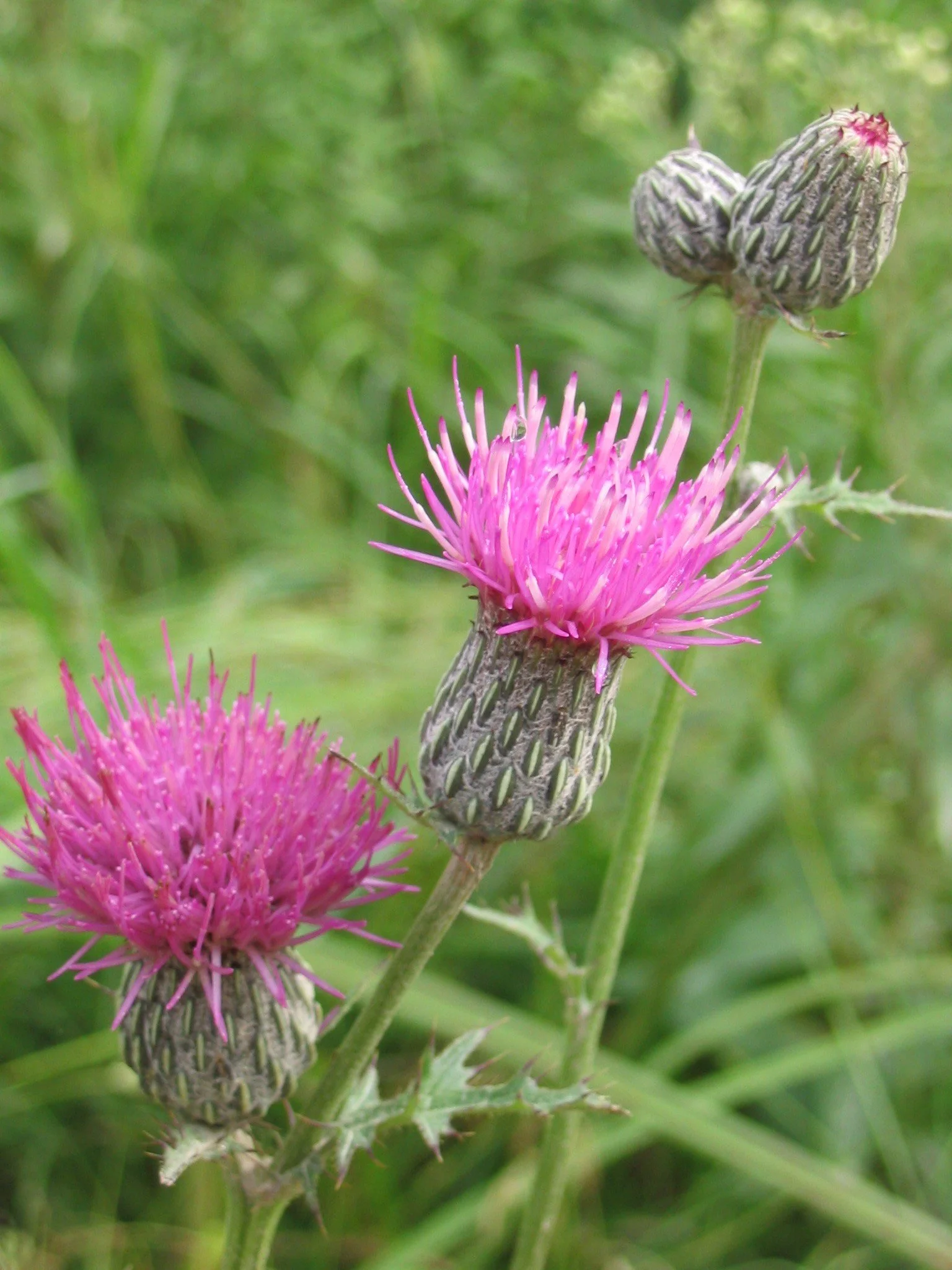By Superior National Forest - https://www.flickr.com/photos/superiornationalforest/5097252797/, CC BY 2.0
Swamp Thistle (Cirsium Muticum)
You may know this wetland thistle by other names: dunce-nettle, horsetops, or marsh thistle.
From a distance, it resembles other thistles: tall, sometimes reaching almost eight feet, leggy, and spiny, with hairy leaves and those distinctive blossoms bursting from a rounded cup in a shock of pink or purple, like a punk rocker’s hairdo. You approach it gingerly, expecting the thorns and bristles conjured up by its name. But when you get near enough to touch, you encounter a soft and downy hairiness.
It is perhaps this that enables it to provide a nurturing home for an increasingly rare butterfly, the Swamp Metalmark; indeed, it’s the only plant this butterfly will lay her eggs on, and the sole source of food for her caterpillar babies. Bees visit it too, finding its webby fibers useful for nest and hive building.
The Swamp Thistle is found mostly in the northern US states and Canada, where, as wetlands begin to disappear, it is increasingly threatened. Some people try to eradicate it, mistakenly thinking of it as a weed, or an invasive species. It is neither, but a beautiful native of our wetland ecology, needing our love and protection.
What do you love about this particular creature?
What do they reveal to you about God and our faith?
The Swamp Thistle reminds me of the parable of Jesus about the Weeds and the Wheat (Matt. 13:24-30). Seeing a jumble of seemingly spiky and scratchy thistles on my riverbank, I may indeed want to tidy up that part of my landscape by pulling them out.
But Jesus says, “Wait! Do you know which is the wheat, the useful and good, and which is the real weedy entanglement of the devil? Can you sort it out? Or can you wait on me?” He assures me he has sent angels to help me look closer at the garden and river and wilder lands beyond, and make room for all the “lilies of the field” that God has made. I confess: I do tend to make quick judgments about plants and people. But I have found that someone who seems bristly and prickly may, on closer encounter, reveal a downy and softhearted nature.
The beautiful Swamp Thistle, providing a home for butterflies and bees, teaches me that with plants and people alike, we are called to pay attention, to listen and look without judgment, so that we too may be part of God’s patient and loving work of welcoming, nurturing, and healing the world.
Author - The Rev. Dr. Jenny Reece
The Rev. Dr. Jenny Reece is a retired episcopal priest who was born in Scotland (whose national emblem is the Thistle) and who now lives on the banks of a little river in coastal Maine, where she runs a retreat center: https://oranbegacenter.com/
"Downeast" Maine is a diverse ecology of coastland, wetland, river and rocky shore, the ancestral homelands of the Wabanaki peoples who still teach us to honor the land and ocean, along with the birds, fish, wildlife, and myriad plants who generously share them with us.
God of Word and Light, you have ordained and constituted in a wonderful order the ministries of all creatures above and below. Mercifully grant that, as the disciples were granted to see Christ on earth, our eyes would be opened to the spiritual reality all around us today; through Jesus the Wisdom of Creation, who lives and reigns with you and the Holy Spirit, one God, for ever and ever. Amen.
Creation Collect for St Michael and All Angels from Season of Creation, A Celebration Guide for Episcopal Parishes
